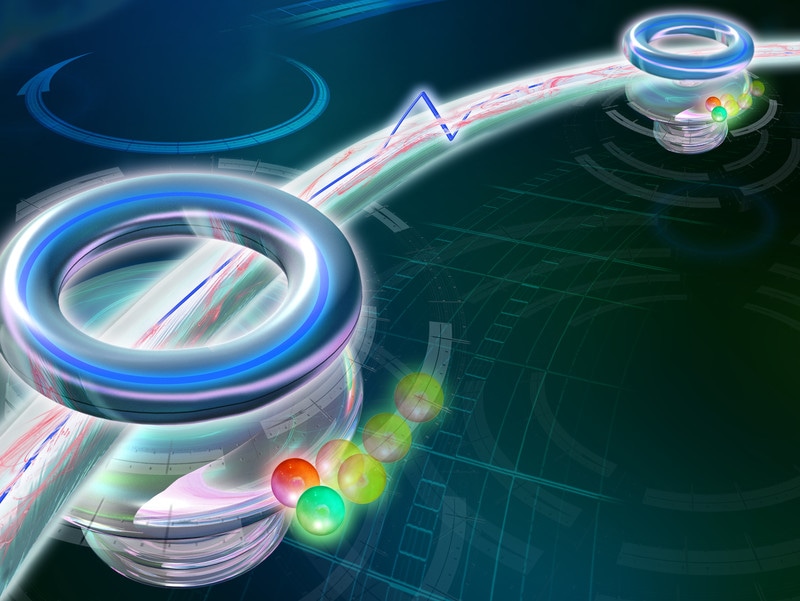Mar 30 2017
 Even in the presence of noise, quantum information transfer is possible with a few special tricks.Credit: IQOQI/Harald Ritsch
Even in the presence of noise, quantum information transfer is possible with a few special tricks.Credit: IQOQI/Harald Ritsch
Scientists from the University of Innsbruck and TU Wien (Vienna) have come up with new solutions that will help in transferring quantum information in a reliable manner when the connecting channels are affected by detrimental noise.
At present, we are using radio signals to communicate with each other and transfer electrical pulses by means of long cables. However, this may not be the scenario in the future. Researchers are working hard to develop innovative techniques for quantum information transfer that will make way for tap-proof transfer of data, or probably even linking of quantum computers.
Quantum information transfer mandates reliable transfer of information from one quantum system to another. However, this is a highly challenging task. At present, two independent research teams from the University of Innsbruck and from TU Wien (Vienna) have created an innovative quantum communication protocol that allows reliable quantum communication to be carried out even when there is contaminating noise. The basic concept used by both the teams is the same: they have added an additional element, a quantum oscillator, to either ends of the quantum channel in order to make the protocol to be immune to noise.
Reliable data transfer
For a long time, researchers have carried out quantum communication experiments. “Researchers presented a quantum teleportation protocol already in the 1990s. It permits transferring the state of one quantum system to another by using optical photons,” stated Benoit Vermersch, a Postdoc in Peter Zoller’s research team from the University of Innsbruck. The protocol holds good even over greater distances; however, the downside is that a number of photons are lost and only a small fraction of them reaches the detector.
Our goal was to find a way to reliably transfer a quantum state from one place to the other without having to do it several times to make it work.
Peter Rabl, Atominstitut, TU Wien
Superconducting qubits — tiny circuits that can exist in two disparate states at the same time — are specifically favorable elements for prospective quantum technologies. In contrast to traditional light switches that can be turned on or off, the quantum physical laws enable qubits to exist in any combination of these states, known as quantum superposition.
Microwave photons, normally used for classic signal transfer, are needed for transferring the quantum state from one superconducting qubit to the other. However, reliable quantum information transfer through a microwave regime is believed to implausible because the weaker quantum signal is entirely superposed by the constant thermal noise.
New transfer protocol
Now, both the research teams have demonstrated that the challenges are not impossible to overcome, as considered earlier. They have worked in collaboration with researchers from Harvard and Yale (USA) to successfully create a transfer protocol immune to the unavoidable noise.
“Our approach is to add another quantum system—a microwave oscillator—as a mediator at both ends of the protocol to couple the qubits instead of coupling them directly to the microwave channel or waveguide,” explained Rabl.
We cannot prevent the thermal noise that develops in the quantum channel. What is important is that this noise affects both oscillators on both ends in the same way. Therefore, we are able to exactly separate the detrimental effect of the noise from the weaker quantum signal through precise coupling to the waveguide.
Benoit Vermerscha, Postdoc in Peter Zoller’s Research Team, University of Innsbruck
“According to our calculations, we may connect qubits over several hundred meters with this protocol,” stated Peter Rabl. “We would still have to cool the channels but in the long term it will be technologically feasible to link buildings or even cities in a quantum physical manner via microwave channels.”